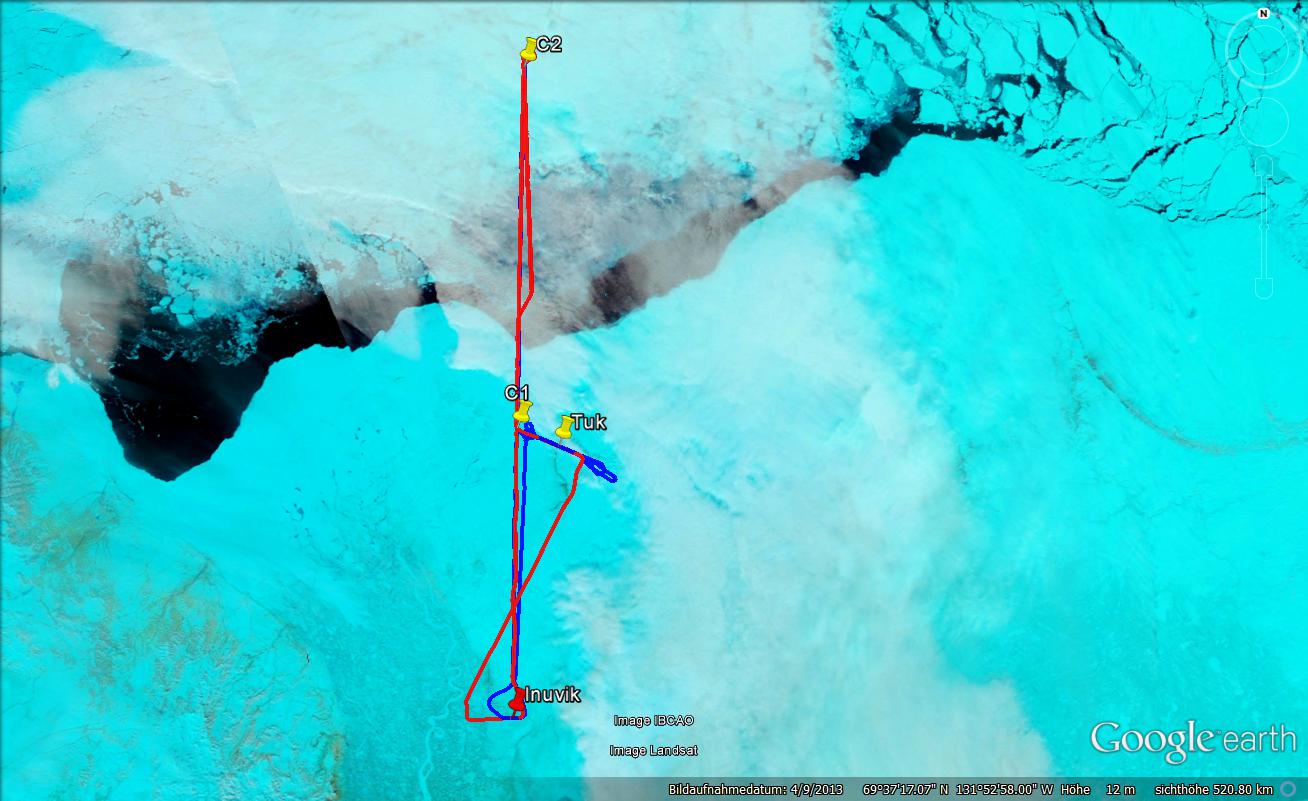
| Take Off: | P5 16:17 UTC | P6 16:15 UTC |
| Touch Down: | P5 18:48 UTC | P6 19:31 UTC |
| Duration | P5 2.31 h | P6 3:16 h |

After the frontal system passed Inuvik, a wide field of low level clouds remained above the Beaufort Sea. The clouds were forecasted to become thinner and disappear during the course of the day. That's why the flight was scheduled early with take-off at 10 am local. The target area for the cloud sampling was chosen straight north of Inuvik up to 71° North. On the way back measurements above the ground station in Tuk were performed. At the airport fog again delayed the departure about 15 minutes.
Soon north of Inuvik low level clouds showed up. At C1 a cloud top altitude of 900 m above ground was observed by AMALi. Close behind C1 a second cloud layer with tops of about 1200 m overlaid the lower clouds. These clouds remained with no visible variability until C2. About 25 miles ahead of C2 a drop sonde was released and confirmed the two layer structure of the low clouds. Temperatures were quite warm with a cloud top temperature of about -3°C while in flight level -5°C were measured. During the entire leg high cirrus clouds were observed by eye and by the radiation sensors. Just north of C2 a midlevel cloud band was visible through the cockpit windows. Polar 5 turned back way ahead of this clouds. On the way back to C1 the clouds did not change. Observations of glories indicate pure liquid water clouds. Sometimes large glories related to small particles and narrow size distributions were seen. The transition of the two layer cloud to a single layer cloud was again detected by the lidar. In the altitudes between both tops of the layers an aerosol signal was measured by AMALi. This single layer cloud remained during the overpass of Tuk. Further south the cloud field ended given AMALi the chance to sample the boundary layer down to the surface.
Polar 6 already sampled a cloud on the way to C1 with cloud top increasing from 2600 ft to 3400 ft. Later between C1 and C2 the cloud was penetrated tree times. The cloud was dominated by liquid water so that the statistics for good cloud particle measurements were reached quickly. In addition, longer legs below the cloud and above cloud top were integrated in the flight for aerosol and trace gas measurements. On the way back Polar 6 once more penetrated the cloud. After that Polar 6 climbed in steps up to 10,000 ft with 5 min legs in different altitudes for aerosol sampling. Before returning to Inuvik, Polar 6 measured in six different altitudes above Tuk. One leg could be chosen in an altitude below the cloud.